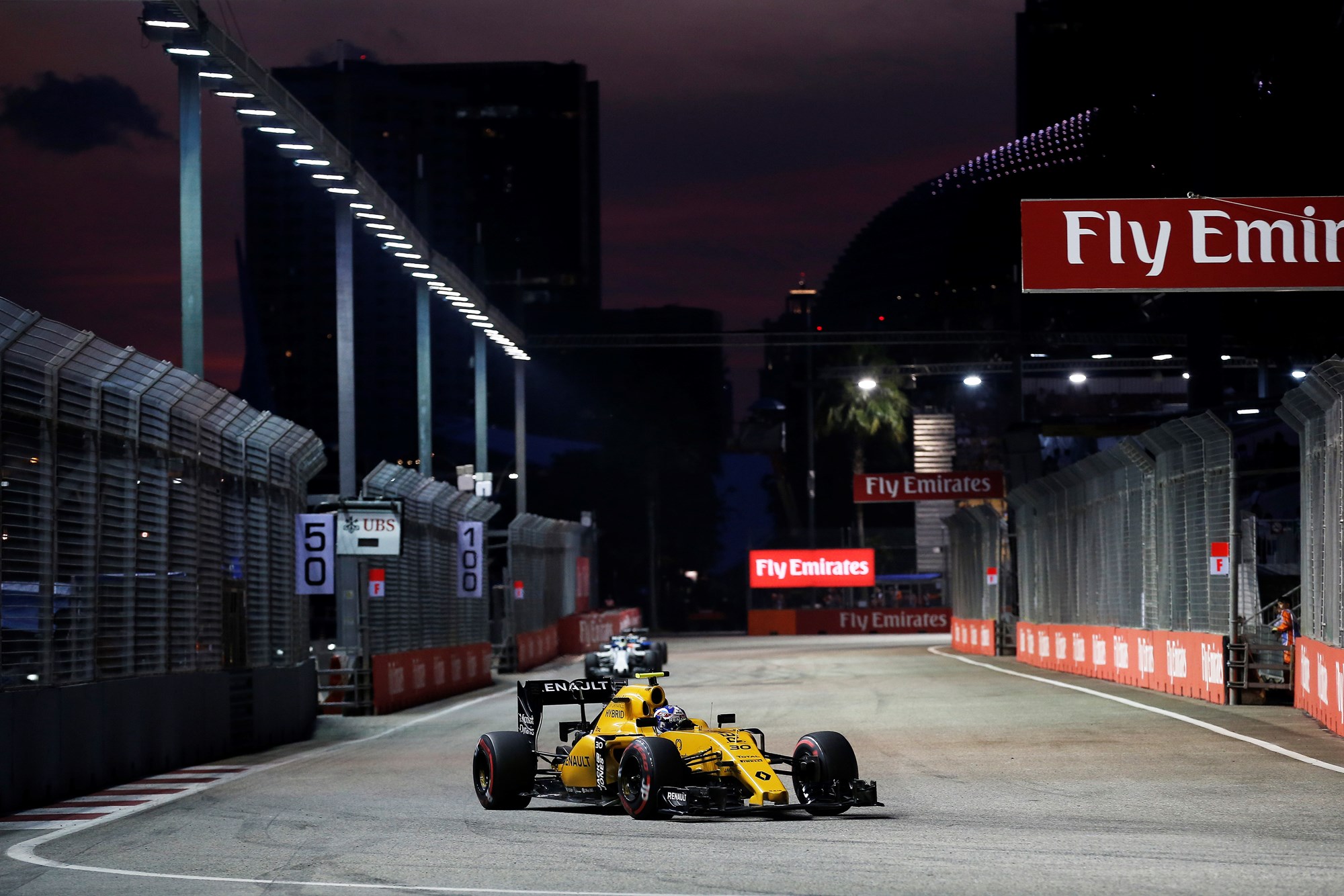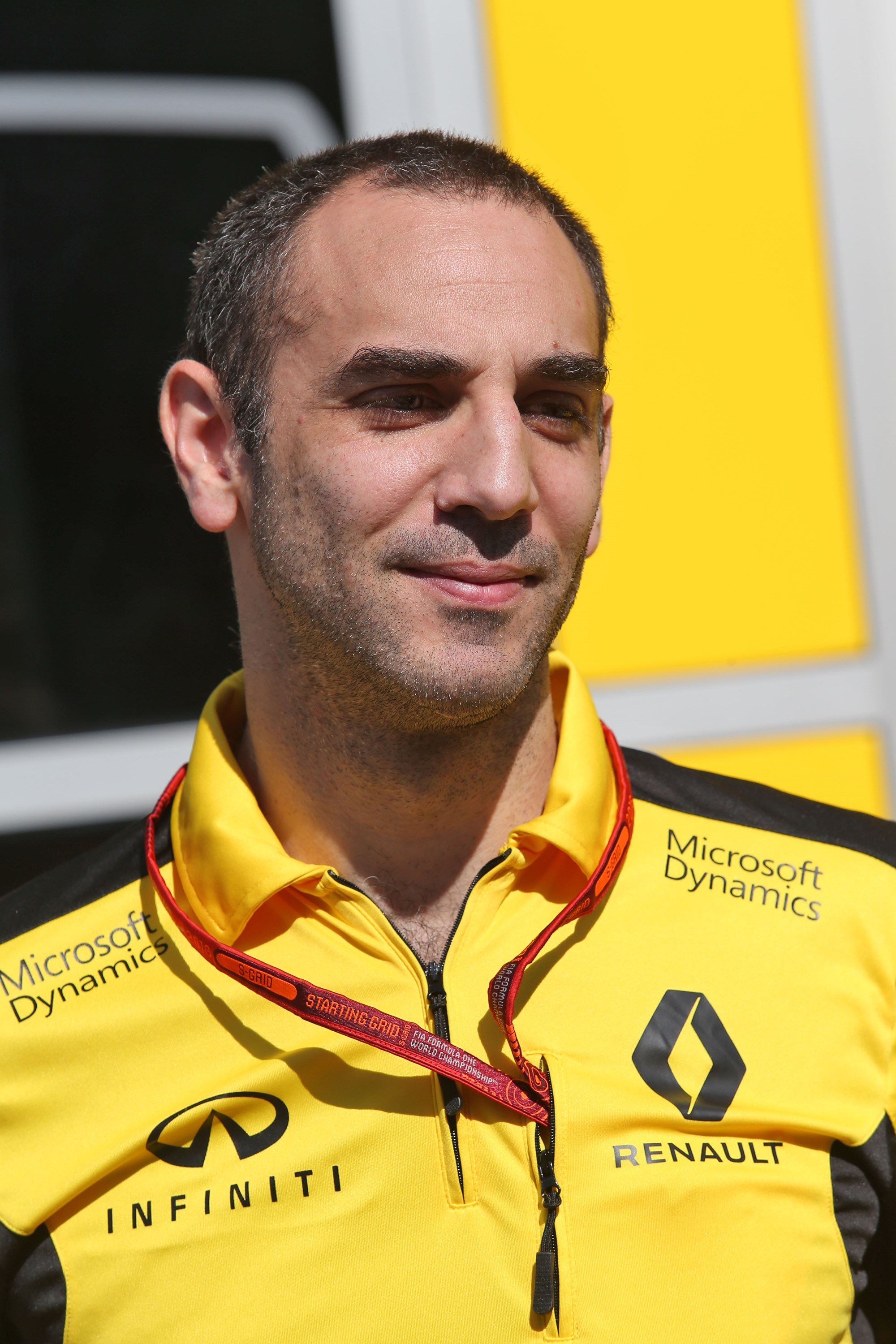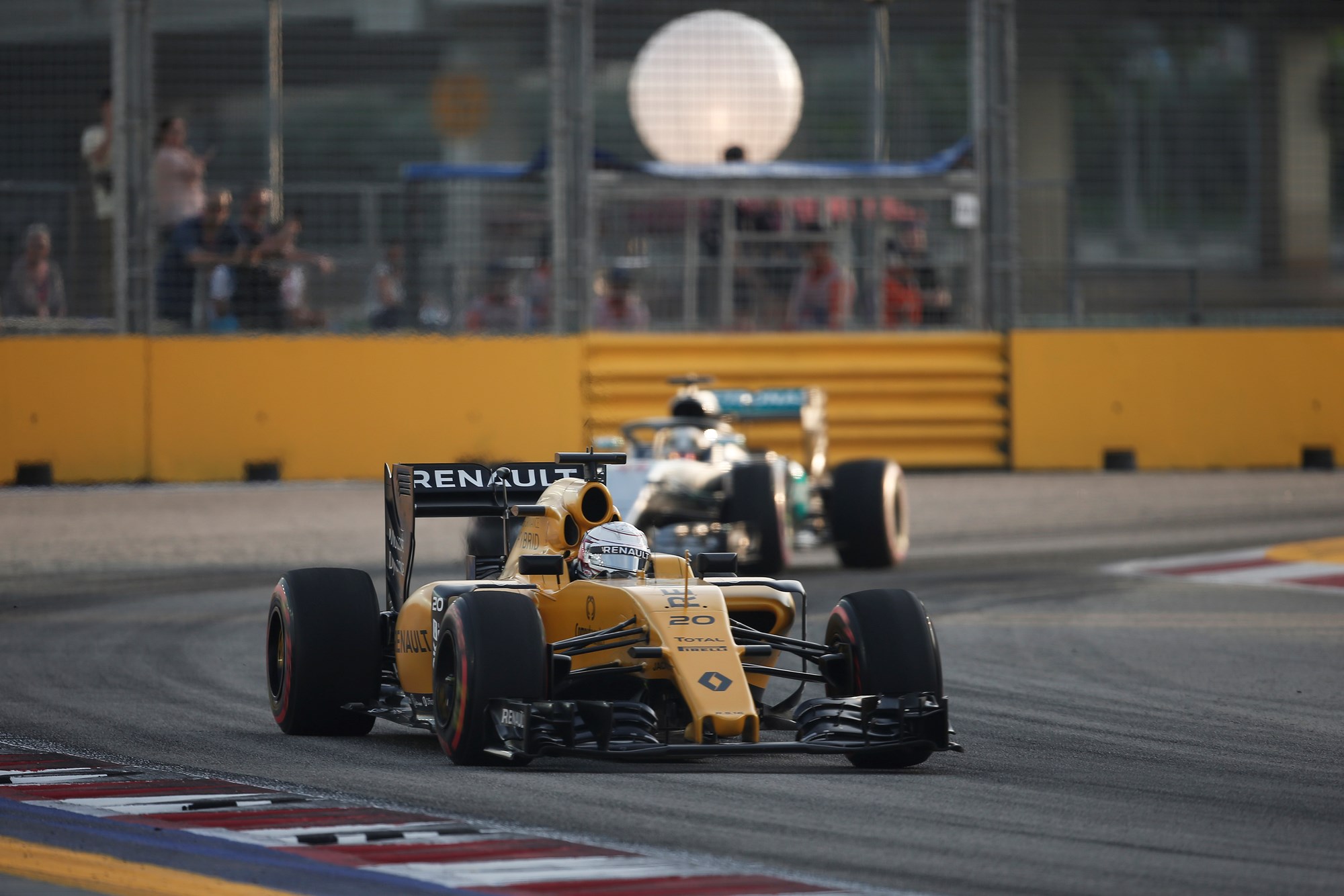It isn't just the cars that go fast at the Singapore Grand Prix; technology has to keep up as well
The Singapore Grand Prix remains a unique round of the Formula 1 calendar, being raced at night under high-intensity discharge lights of such brightness that it may as well be daytime when you're watching the track action on TV at home.
The other thing that tends not to translate through the TV screen is the heat.
With the tropical temperature in the high 20s even after the sun has gone down, that sweat on the brow of the team principal isn't connected solely to the tension of the race.
But the team garage is certainly filled with a degree of tension, even before qualifying commences -- let alone the race itself.
I don't habitually go looking for tension, but I was lucky enough to experience it up close with the Renault Sport Formula 1 Team at this year's championship round in Singapore.
The other thing every pit garage is filled with -- stuff that seems peripheral on TV but is very much everywhere and utterly relied upon on the ground -- is super-robust information technology.

Jolyon Palmer for Renault in Singapore this month
Microsoft was keen to show me how it has been working with the Renault team (originally the Lotus F1 Team) as a technology partner since 2012 and how, with cloud-based systems such as Microsoft Dynamics AX and Office 365, the ability for the tech service provider to look after the interests of the team, and for the team to in-turn provide Microsoft with in-the-field performance feedback, is endless.
The closest the average Formula 1 attendee comes to technology is the screen of their smartphone as they generate selfie after selfie, or the complex network of automated security kiosks everyone must negotiate to get into the inner sanctum -- the Paddock -- at the track.
But hang around a pit garage long enough and it becomes apparent that, actually, speed on the track is just part of the story.
Without processing speed and the sorts of digital solutions with which Microsoft provides the Renault Sport Formula 1 Team, there'd be no team there at all.
It's easy to forget about all the actual processing power needed not only to get the cars performing over the race weekend, but to get the parts modelled and developed in the first place, then fitted and tested on the cars, then on the cars at the actual track in time for the actual race.
As Renault Sport Formula 1 Team Managing Director Cyril Abiteboul [below] tells me, an F1 team is very much like a conventional corporate entity; it's just that everything needs to happen much, much faster.
"We're a data-driven organisation and we used to travel with big servers out of necessity. But working in the cloud eliminates the need for that sort of physical back-up; we have secure systems that don't require all that hardware.
"Every single kilo of equipment we transfer around the globe costs money, so we need to be as cost-effective as possible.
"There used to be a bit of a disconnect between personnel at the track and personnel at the factory, but with collaborative technology at our disposal -- and available to everyone in the organisation at the same time -- we're not working in silos anymore."

Supercomputers capable of processing 150GB of data per hour are used to assess every aspect of the race cars and deliver real-time information to the track-side team and those back in the Paris and Enstone (UK) manufacturing bases.
Formula 1 cars have a complex network of about 200 on-car sensors and two or more sensors can be matched to form around 20,000 virtual channels.
As a result, during tests and races, each car relays an enormous amount of data back to the team.
Data from these sensors can help create real-time alerts on tyre degradation, temperature, airflow and aerodynamics, the travel on the throttle, brake and oil temperature, minute movements inside the gear box, and of course ambient track conditions -- all processes which help with the team's competitiveness.
Renault Sport Formula 1 Team uses a system known as Microsoft's Azure Machine Learning suite in order to integrate all this data into a simulator so that thousands of race scenarios can be modelled in order to help predict how the car will perform in different situations.
"You can only develop race tactics by modelling and simulating what might happen," Abiteboul says.
The Frenchman, who has worked in the automotive industry since 2001 and got his big break with the Caterham F1 Team in 2012, before taking his current position in 2014, says this year is a "bedding-in" year for the Renault team.
Big changes are coming next season and the team is hoping to utilise the power of a manufacturer-backed development programme (along with Mercedes and Ferrari it is one of only three engine manufacturers in the series).
In the here-and-now though, the team still wants to be as competitive as it can be.

With 21 races this season, the pressure is continually on to produce and deliver race car re-configurations and new parts quickly in order for the team to stay with the pack.
"We need to be able to make changes to our cars at an incredible speed and so our supply chain is critical," Abiteboul says.
"We 3D-print certain components back at the factory. Depending on the situation, we may need that part within 24 hours, so we rely on the information technology we have to make sure it gets to where it is needed."
"With systems such as those provided by Microsoft, we can reduce the amount of time it takes to make ideas at the factory a reality at the track.
"The sport is about constant improvement after all, even off the track."




